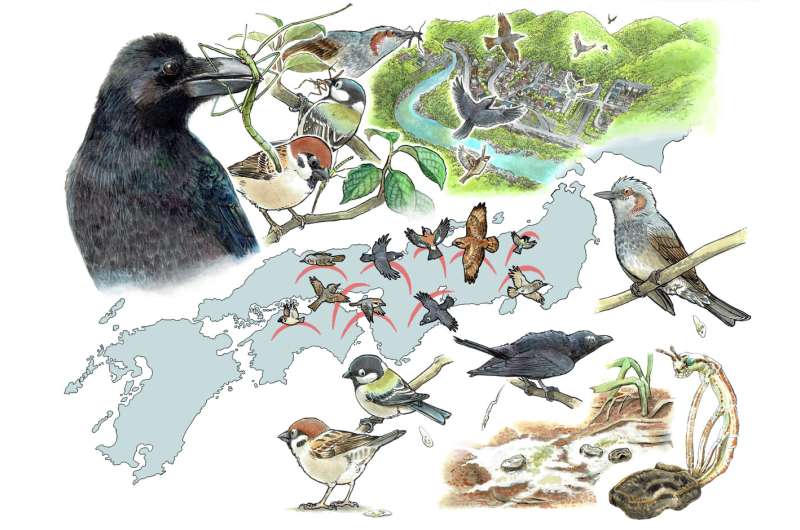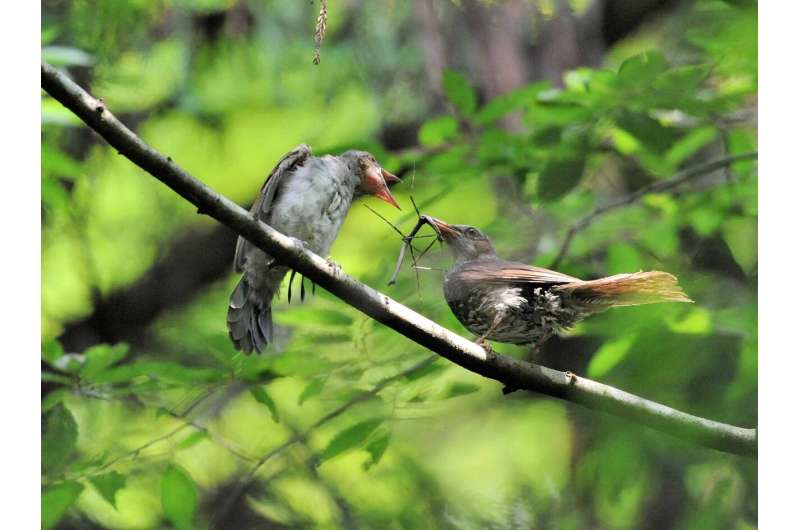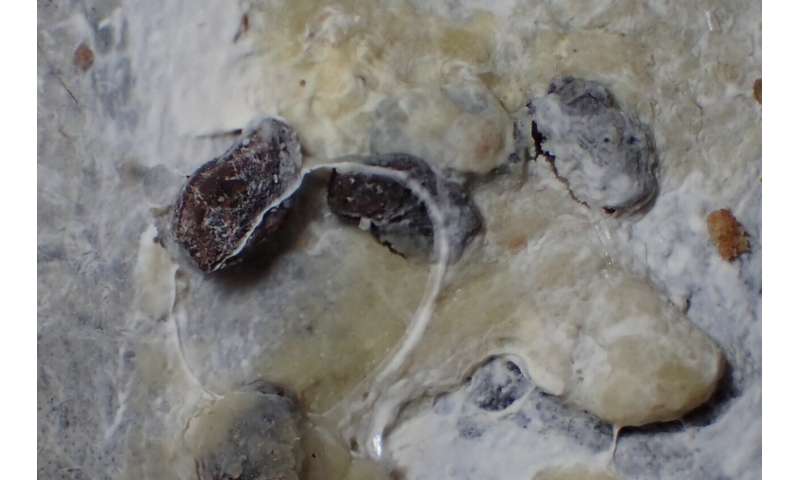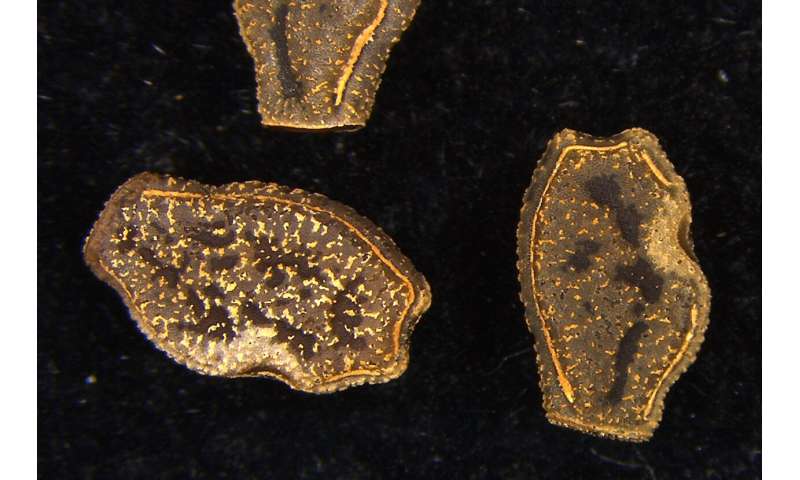This article has been reviewed according to Science X's editorial process and policies. Editors have highlighted the following attributes while ensuring the content's credibility:
fact-checked
peer-reviewed publication
trusted source
proofread
Study shows birds disperse eaten insects' eggs

Relationship patterns among flightless stick insects suggest that birds disperse the eggs after eating gravid females. Lab experiments previously suggested the possibility, but a new genetic analysis of natural populations in Japan by Kobe University researchers now supports the idea.
Most species of stick insects are flightless, yet they are distributed over wide distances and across geographical features that would impede the expansion of flightless animals. This has caused researchers to speculate that their eggs might be dispersed by birds feeding on gravid females, much in the same way as many plant species rely on birds eating their seeds together with fruits and dispersing them while the seeds pass through the digestive tracts of the birds unharmed.
Experimental studies with Ramulus mikado, a common stick insect in Japan, had suggested that this is possible, but since direct observation of such an event in nature is highly unlikely, it has been unclear whether this mechanism actually contributes to the distribution of the insect.
Kobe University biologist Suetsugu Kenji and his team therefore turned to the analysis of the relationship patterns of Ramulus mikado populations. He explains, "We made use of the idea of genetic isolation by geographic distance."

"According to this idea, when individual dispersal distances are smaller, such as in flightless insects, the accumulation of genetic mutations eventually leads to a positive correlation between genetic differentiation among locations and the geographic distance that separates them." Thus, the genetic variation between different populations can be a proxy for the species' rate of dispersal.
The results, published in the journal Proceedings of the Royal Society B, paint a vivid picture. Among many genes where the differences correlated with the geographic distance, the team found a few examples of genes that were clearly closely related even though they were geographically separated by up to hundreds of kilometers and across geographic features that these animals usually cannot overcome.
Lead author Suetsugu says, "Astonishingly, amidst a sea of limited active dispersal, we discovered identical genotypes jumping across vast distances, strongly indicating the past occurrence of passive long-distance genetic dispersal." In other words, a few of the flightless insects must have flown from place to place, and the only plausible way in which this could happen is that the eggs of the insects survive the passage through the digestive tract of birds that eat them.
-

These feces of the brown-eared bulbul contain intact stick insect eggs. Credit: SUETSUGU Kenji -

Intact eggs of stick insect species Ramulus mikado recovered from the feces of the brown-eared bulbul. Credit: Suetsugu Kenji
Then why is this method of dispersal not seen in other insects? The Kobe University researcher explains, "The eggs of most insect species are typically fertilized just before being laid, relying on sperm stored within the female insects after copulation. However, in some stick insect species, females are parthenogenic, that is, they can produce viable eggs without fertilization." It is only because of this quirk in their nature that viable stick insect babies can hatch from the eggs.
It is important to keep in mind that stick insects are called that way precisely because their main strategy of survival is not being eaten by their predators, as opposed to many plants that rely on their fruit being ingested and thus their seeds being dispersed by animals. Nevertheless, Suetsugu explains the importance of this result for the scientific community: "This finding invites researchers to delve deeper into the mechanisms of dispersal in various species and challenge long-held assumptions about the fate of organisms devoured by predators."
More information: Suetsugu Kenji et al, Phylogeographical evidence for historical long-distance dispersal in the flightless stick insect Ramulus mikado, Proceedings of the Royal Society B: Biological Sciences (2023). DOI: 10.1098/rspb.2023.1708. royalsocietypublishing.org/doi … .1098/rspb.2023.1708
Journal information: Proceedings of the Royal Society B
Provided by Kobe University


















